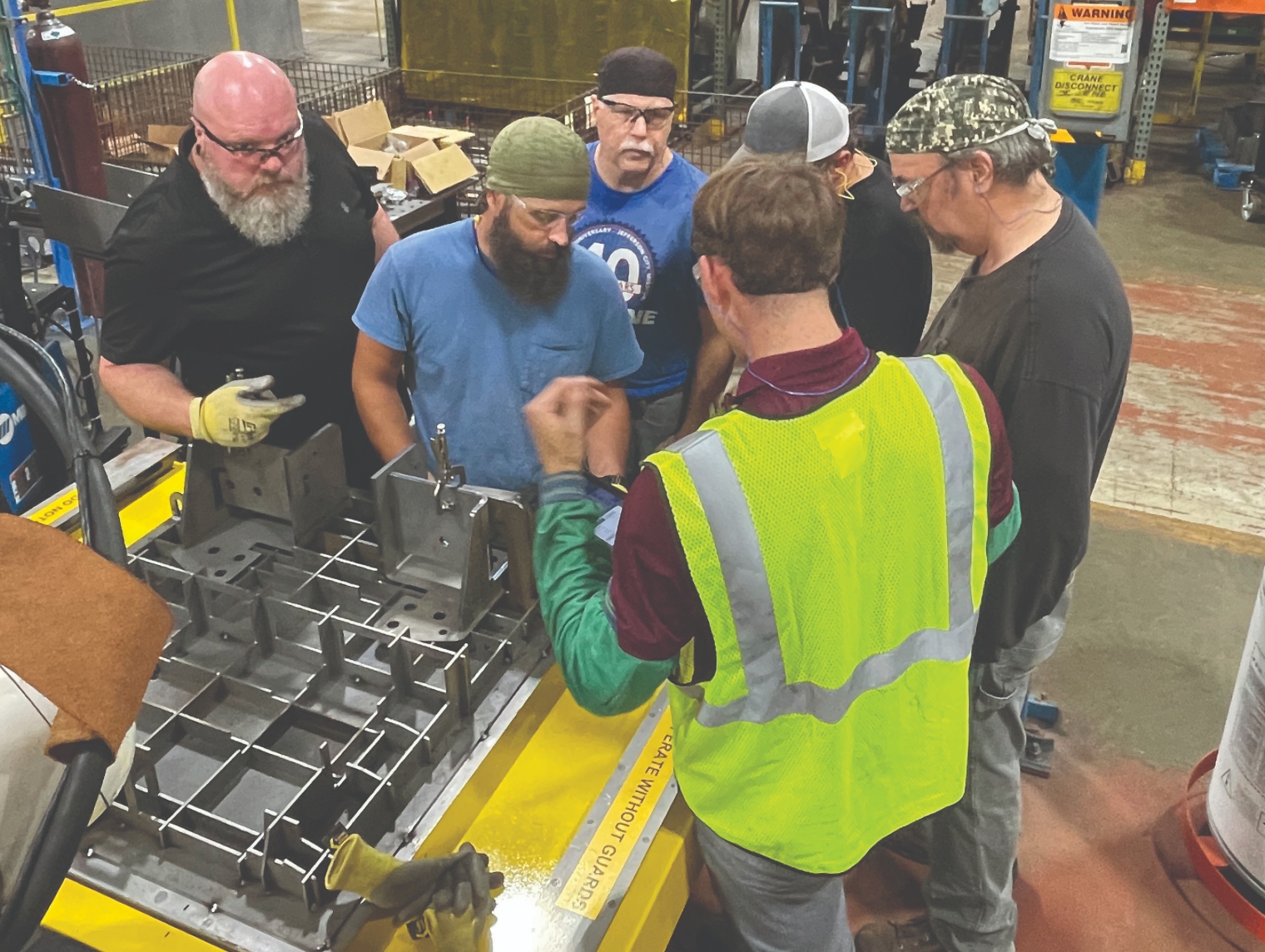Getting the Most from Your Cobot

Learn tips to maximize your machine’s productivity
By DOUG SCHEETZ, vice president of marketing and new product development, Flextur, Dalton, Ohio.
Reprinted with permission: The AWS Welding Journal
Welding cobots have the potential to revolutionize metal manufacturing. They also play a major role in combating the labor gap in the welding industry. The cobot market is projected to be worth $9.2 billion by 2028 (Ref. 1). Therefore, many people feel cobots are here to stay. Yet many companies struggle to fully utilize these machines. What’s keeping cobot owners from being more productive and more efficient? What is preventing greater arc-on times? Size and reach are a factor, but there’s more to the story.
Achieving Greater Arc-On Times
Here are five overarching concepts to think about when considering a cobot purchase. By planning for and understanding different variables, you will be more likely to get the most from your new investment.
Are you and your parts ready for automation? Setting up and maintaining a cobot weld cell is a new automation experience automation for many. Partnering with the right automation company to help you get started on the right foot is critical. But that is just the beginning. Companies that provide cobot solutions are experts in either robotics or welding. Even if they have an operational understanding, they are not the operational experts of your organization. You must still solve all the other up- and downstream issues that are critical to the success of the cobot cell. You may very quickly learn that your manual welders are compensating for irregular parts or inconsistencies. Often, companies need to tighten their upstream tolerances for automation. If you don’t solve the problem at its root, you are destined for an endless loop of touching-up programs. So goes the saying that if you can’t repeat it, you can’t automate it.
Do you have the right people in the right seats? Hiring professionals who understand how to program cobots can be time consuming, difficult, and expensive. Training your current workers to program, manage, and maintain your cobot might be a better solution. The knowledge your team has about welding and the type of welding or parts you are producing can be extremely valuable. Just remember, your best welder might not be your best cobot programmer. Welding experience certainly makes some aspects easier, but don’t overlook someone with less experience who has grown up with cell phones and video games.
What are you planning to weld with your cobot? This is a very important question and one that’s critical to answer before you make a purchase. This could be one area where size does matter. The size of the arm and the size of the welding or fixture table have a direct influence on the system that will work best for you. Often, companies think they want to automate their most difficult parts. Or they look at parts recording the most labor hours. Consider automating the simplest or most consistent parts. These are the parts that nobody likes to do because they are monotonous and boring. Let the robot do them. They are generally easier to set up and can free up your manual welders to do more difficult tasks where their skills are required and better appreciated. Ultimately, you must decide what is best for your organization, but look at it from a few different directions before deciding. We’ve found incremental success to be more effective than wholesale process changes.
How quickly can you transition from one part to the next? Cobots can be a great solution for high-mix, low-volume parts. But to be efficient, you must eliminate downtime between the last good part and the first good part when switching between jobs. Preparing your next parts offline or on a B side is critical to increased productivity. Fixturing, loading parts, and offline programming while the cobot is still consuming wire puts you significantly ahead. Often, small cobot carts do not allow the work surface to safely do this. Therefore, the cobot has to sit dormant while parts are unloaded and loaded again. We’ve seen customers who have increased productivity from 20 manually welded parts per day to 80 parts per day on a cobot. That’s a 300% increase in productivity, with the majority of the time savings coming from the consistency of the setup and the ability to reload and weld at the same time, not from the speed of the welder.
How can you be efficient if you’re not safe? Because cobots are designed to be interactive and feature built-in safety sensors, people tend to forget the most basic safety measures. Welding will produce intense and potentially damaging light flashes, not to mention the fumes. Some operators think because they are not welding, they do not need to heed the proximity of the welding cobot, and too often, appropriate safety curtains are not in place. Having a strong machine-tending safety protocol is still important when working with cobots.
Conclusion
Incorporating welding cobots into your process can significantly enhance productivity and efficiency. Yet to see the full benefits of your cobot investment, it’s essential to understand all the aspects that can contribute to cobots being underutilized. Studying the factors mentioned above can be the catalyst for increased arc times and productivity, perhaps even more than the size and brand of the cobot you choose.
Reference
1.Globe Newswire. 2023. Latest report on collaborative robot (cobot) market worth US $9.2 billion by 2028, growing at a CAGR of 41.5%. Retrieved March 13, 2024, from globenewswire.com/en/news-release/2023/03/06/2620652/0/en/Latest-Report-on-Collaborative-Robot-Cobot-Market-worth-US-9-2-billion-by-2028-Growing-at-a-CAGR-of-41-5.html.
Fig 1 — Teaching manual welders to look for proper part fitment within a fixture for cobot applications.















